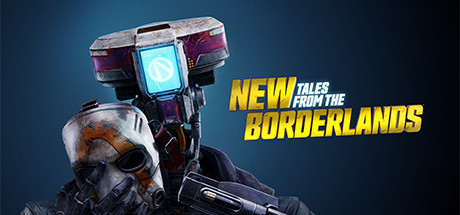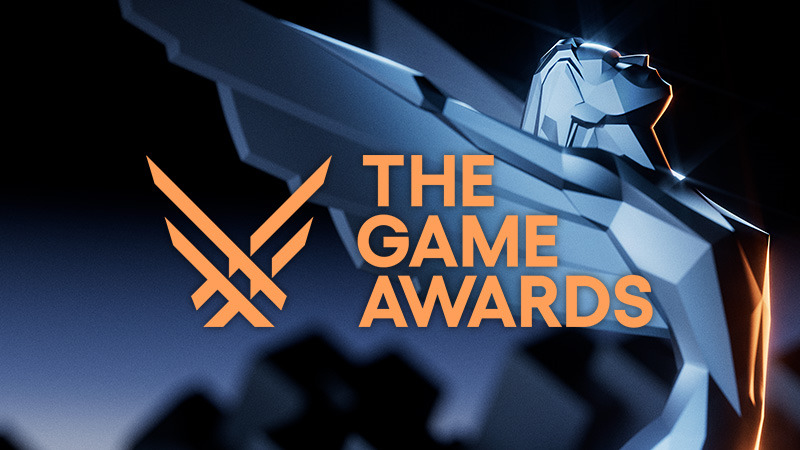The stories of our daily lives unfold through some combination of free will, fate, a higher power, and the entropy of the universe—but how does a choice-based narrative adventure like New Tales from the Borderlands come into being? The Gearbox development team has carefully crafted the tale of Anu, Octavio, and Fran joining forces to make mayhem their business, but as the player, you're the one in control of how exactly their story will be told.
So how do the writers decide where to drop in all those conversational, comical, or soul-crushing decisions? How should those choices play into the ultimate direction that your story goes? And when is stone-cold silence appropriate?
Lin Joyce, Head of Writing at Gearbox Software and a bona fide PhD in Narrative System Design, has the answers to those questions and many more. In this first New Tales Dev Diary article, Lin shares a behind-the-scenes look at the overarching design of New Tales from the Borderlands and how this extraordinary Borderlands story came into being thanks to the combined efforts of the development team.

[b]Charting a narrative course[/b]
When you boil it all down, the story of New Tales is determined by two core elements. "On a game like this, there's always a narrative design component and the script component," explains Lin. "The narrative design element is looking at how the player is going to interact with the story and have a level of agency in the direction that the script goes. First you have to chart everything out, then you start plugging in the script.
"As a lead, you have purview over both the narrative design and the script. For any given scene, you have to think, 'What is the player's opportunity to impact this moment? What are the mechanics that filter into that?' But also, what story are we telling, and what are the characters saying? It was my job to be the custodian of the cohesive vision, so that we could delegate across our team of four writers, while making sure that the overall plan and outline for the story are being met."
How in the world does the script go from a blank sheet of paper to the cinematic thrill ride that unfolds between our three protagonists and everyone (or everything) they come into contact with? "As we're going through the outline and narratively designing it, a lot of it, at least for me, is letting the characters tell you where the path of the story should split," says Lin. "For the outline, there has to be a thread of consistency that you're tracking throughout to make a cohesive experience. But there are those moments where as human beings, we think 'What would I do in this scenario?'
"If as a writer I'm asking myself that question, the beauty of an interactive narrative is that I can answer it both ways, or all four ways, or however many ways, and see where that takes me. So anytime we get the question of 'What would Octavio do?' The answer is 'Don't decide—just let it go, play with that.' In that way it's really freeing as a writer to be able to examine all the possible things a character might do that are true to a version of that character. Some days I choose chaos, right? Other days I don't. They're both still me."
Of course, any story worth its salt sees its fair share of revisions during the creative process. "For a story-driven game, the story is the key mechanic, so we made sure that it stayed flexible until the very end of development," says Lin. "Whenever we had the first draft of an episode written, we'd turn it into a playable version of the script with text-to-speech programs reading each character's lines. Then we'd bring all the team leads in for a table read—not just the narrative team, but the design team, character art, cinematics, audio, on and on. It was fun having the other stakeholders shout out things they wanted to try for each conversation option. If no one was picking an option, we'd think "Maybe we've got to go rewrite that; no one seemed stoked about that choice."

[b]Living with your decisions[/b]
If you've played the original Tales from the Borderlands or narrative games like it, you'll be intimately familiar with the common sight of "[This character] will remember that" popping up in the corner of the screen after you've made a particularly impactful choice. But there are no such markers in New Tales from the Borderlands, with the developers making a conscious design decision to keep any ripple effects of your choices ambiguous. "If a game is telling you through its UI what it thinks is important, then it's also signaling what isn't," says Lin. "That can easily break immersion, or make players think to game the system."
Oftentimes, the temptation to quickly undo a conversation choice or desperate decision you made on instinct can actively take you out of the plot. "When I see that notification, I might think 'If this character is going to remember that, and I don't want them to, I now know to close the game, reload, and do it again,'" says Lin.
The same pitfalls apply when games tack a binary moral alignment onto the choices you make. "I might start off an RPG thinking, 'I'm going to pick the choices that are very true to me'—but the minute the game starts telling me that something was an evil choice, I'm like 'Don't judge me! Don't tell me I'm bad!'" Lin laughs. "You start to have this moral conversation with the game itself rather than its story. I might've learned more lessons about myself had the game not been intruding in that way. We want people playing New Tales to think, 'Yeah, I chose that. I don't necessarily know when and where to come back to play it differently because I want the 'good' ending.' There is no 'wrong' ending here; they're all justified based on your choices."
Uncertainty about the ramifications of each choice also encourages conversation, with everyone sharing personal moments and trying to decipher where their paths started to diverge. "Because we're not immediately telling you exactly where the tracking points between characters are, there's a lot to discuss with other players," says Lin. "We want people to play and experiment with the game and the story to learn a little bit more, and one of the ways to do that was to actually remove that prompt or that immediate feedback."

[b]Silence can be golden[/b]
Though it's not always an option, many conversations in New Tales include the choice to simply say nothing and let the resulting silence do the talking. "Silence can be a perfectly valid response to something—either you don't know the answer, or you want to signal to somebody that maybe they shouldn't be asking you that, right?" says Lin. "Sometimes silence communicates more than words could, but we took that on a case-by-case basis. 'Is silence appropriate here, and if it isn't, then what is?' As a player I don't often pick silence in narrative games, but writing for silence is often the most fun, because you have to make that silence meaningful and impactful any time that it's there. To all the people that never pick silence, I'll just say that we do have some pretty fun gems hidden in silent options."
A perturbed eyebrow raise or indifferent shrug might really say it all, so try not to overlook the ellipses route. And if you don't select a response—perhaps because you were indecisive or overwhelmed before time ran out—you'll always default to silence if it's one of the presented options. "In our testing, we would, to the level that we could, go in and let the game play itself," Lin explains. "Even if the player gave no input, we had to make sure that refraining from talking would still allow the story to be told cohesively. It's a fun test getting to sit back and watch the game roll. We don't want New Tales to be a solely cinematic experience—it's meant to be a game—but we did have to test for the scenario where someone wants to be as passive as possible."
Whenever you're taking a while to deliberate your ideal response in a narrative game, you're technically leaving the other party hanging. But it's worth indulging in some awkward silences to hear the totally tangential lines of dialogue that crop up when someone's patiently waiting for you to weigh in. "While the game is idling and waiting for your input, it's sort of a weird dance—those things do happen in natural conversations, but maybe less frequently than we have to put them in," Lin laughs. "We tried to use them as vehicles for humor; if you tap a button you'll launch into your response, so those idling lines can't contain any critically important information. Whether or not you hear them, the story will just keep moving on. So we often had fun thinking 'How can I make this entertaining?' What's the best joke we can put in here; how do we add dimension to that character while they're idling?"
Just as inaction can be a conscious choice during conversations, you're also encouraged to see what happens when you abstain from a Quick Time Event, or QTE. A life-or-death situation will probably result in a fatal Game Over if you forgo or flub QTE prompts, but some moments make it your prerogative if you want to purposely flop a QTE. "There are 'soft fails,' so you don't have to beat every QTE, and maybe in fact shouldn't," says Lin. "We wanted to prompt you to think 'Is it the right call to do this?' Often the game will allow for both scenarios—so 'failure' is often an option that leads to different results."
When New Tales from the Borderlands launches on October 21, it'll be up to you how your story plays out, including how often silence and resolute failure play into it. Until then, stay tuned for more Dev Diary articles about the making of New Tales!

